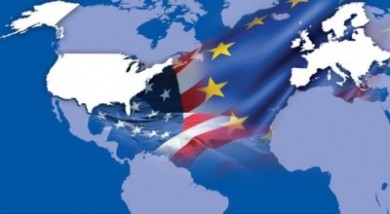Richard Cooper and Richard Dobbs examine how the end …
Project Syndicate
Jan 28, 2014
By Richard Cooper and Richard Dobbs
 The departure of US Federal Reserve Board Chairman Ben Bernanke has fueled speculation about when and how the Fed and other central banks will wind down their mammoth purchases of long-term assets, also known as quantitative easing (QE). Observers seize upon every new piece of economic data to forecast QE’s continuation or an acceleration of its decline. But more attention needs to be paid to the impact of either outcome on different economic players.
The departure of US Federal Reserve Board Chairman Ben Bernanke has fueled speculation about when and how the Fed and other central banks will wind down their mammoth purchases of long-term assets, also known as quantitative easing (QE). Observers seize upon every new piece of economic data to forecast QE’s continuation or an acceleration of its decline. But more attention needs to be paid to the impact of either outcome on different economic players.
CommentsView/Create comment on this paragraphThere is no doubting the scale of the QE programs. Since the start of the financial crisis, the Fed, the European Central Bank, the Bank of England, and the Bank of Japan have used QE to inject more than $4 trillion of additional liquidity into their economies. When these programs end, governments, some emerging markets, and some corporations could be vulnerable. They need to prepare.
CommentsView/Create comment on this paragraphResearch by the McKinsey Global Institute suggests that lower interest rates saved the US and European governments nearly $1.6 trillion from 2007 to 2012. This windfall allowed higher government spending and less austerity. If interest rates were to return to 2007 levels, interest payments on government debt could rise by 20%, other things being equal.
CommentsView/Create comment on this paragraphGovernments in the US and the eurozone are particularly vulnerable in the short term, because the average maturity of sovereign debt is only 5.4 years and roughly six years, respectively. The United Kingdom is in better shape, with an average maturity of 14.6 years. As interest rates rise, governments will need to determine whether higher tax revenue or stricter austerity measures will be required to offset the increase in debt-service costs.
CommentsView/Create comment on this paragraphLikewise, US and European non-financial corporations saved $710 billion from lower debt-service payments, with ultra-low interest rates thus boosting profits by about 5% in the US and the UK, and by 3% in the eurozone. This source of profit growth will disappear as interest rates rise, and some firms will need to reconsider business models – for example, private equity – that rely on cheap capital.
CommentsView/Create comment on this paragraphEmerging economies have also benefited from access to cheap capital. Foreign investors’ purchases of emerging-market sovereign and corporate bonds almost tripled from 2009 to 2012, reaching $264 billion. Some of this investment has been initially funded by borrowing in developed countries. As QE programs end, emerging-market countries could see an outflow of capital.
CommentsView/Create comment on this paragraphBy contrast, households in the US and Europe lost $630 billion in net interest income as a result of QE. This hurt older households that have significant interest-bearing assets, while benefiting younger households that are net borrowers.
CommentsView/Create comment on this paragraphAlthough households in many advanced economies have reduced their debt burdens since the financial crisis began, total household debt in the US, the UK, and most eurozone countries is still higher as a percentage of GDP (and in absolute terms) than it was in 2000. Many households still need to reduce their debt further and will be hit with higher interest rates as they attempt to do so.
CommentsView/Create comment on this paragraphSome companies, too, have been affected by QE and will need to take appropriate steps if such policies are maintained. Many life-insurance companies and banks are taking a considerable hit, because of low interest rates. The longer QE continues, the more vulnerable they will be. The situation is particularly difficult in some European countries. Insurers that offer customers guaranteed-rate products are finding that government-bond yields are below the rates being paid to customers. Several more years of ultra-low interest rates would make many of these companies vulnerable. Similarly, eurozone banks lost a total of $230 billion in net interest income from 2007 to 2012. If QE continues, many of them will have to find new ways to generate returns or face significant restructuring.
CommentsView/Create comment on this paragraphWe could also witness the return of asset-price bubbles in some sectors, especially real estate, if QE continues. The International Monetary Fund noted in 2013 that there were already “signs of overheating in real-estate markets” in Europe, Canada, and some emerging-market economies. In the UK, the Bank of England has announced that in February it will end its mortgage Funding for Lending Scheme, which allowed lenders to borrow at ultra-low rates in exchange for providing loans.
CommentsView/Create comment on this paragraphOf course, QE and ultra-low interest rates served a purpose. If central banks had not acted decisively to inject liquidity into their economies, the world could have faced a much worse outcome. Economic activity and business profits would have been lower, and government deficits would have been higher. When monetary support is finally withdrawn, this will be an indicator of the economic recovery’s ability to withstand higher interest rates.
CommentsView/Create comment on this paragraphNevertheless, all players need to understand how the end of QE will affect them. After more than five years, QE has arguably entrenched expectations for continued low or even negative real interest rates – acting more like addictive painkillers than powerful antibiotics, as one commentator has put it. Governments, companies, investors, and individuals all need to shake off complacency and take a more disciplined approach to borrowing and lending to prepare for the end – or continuation – of QE.
Richard Dobbs is a director of the McKinsey Global Institute.





